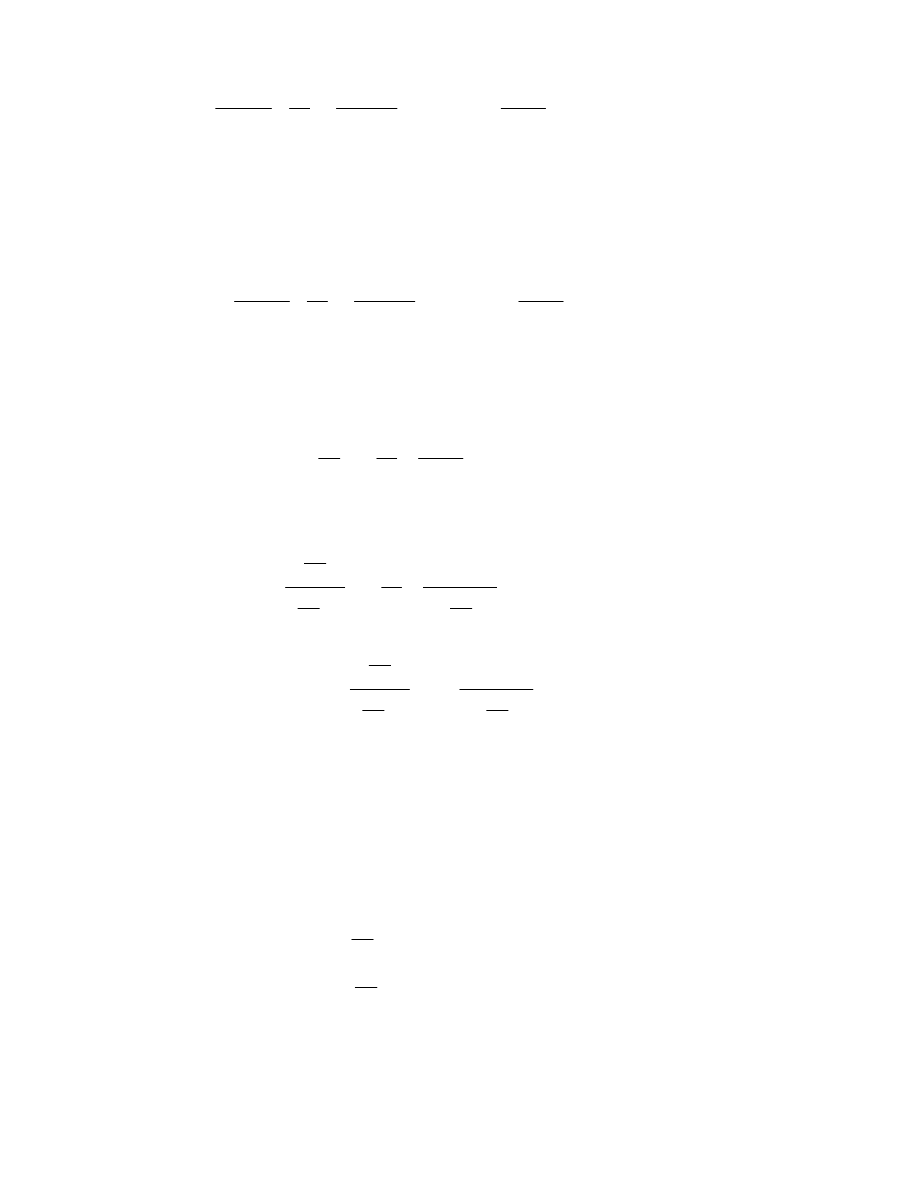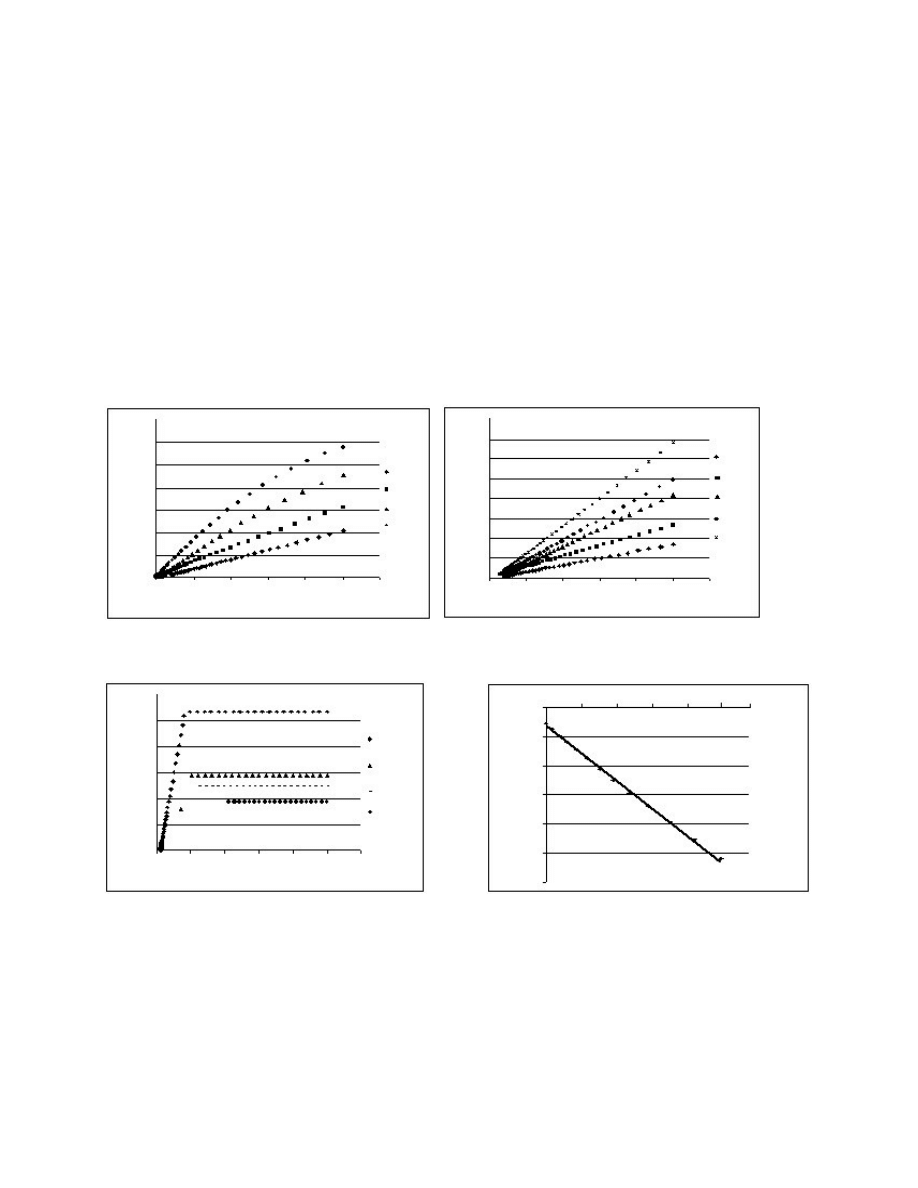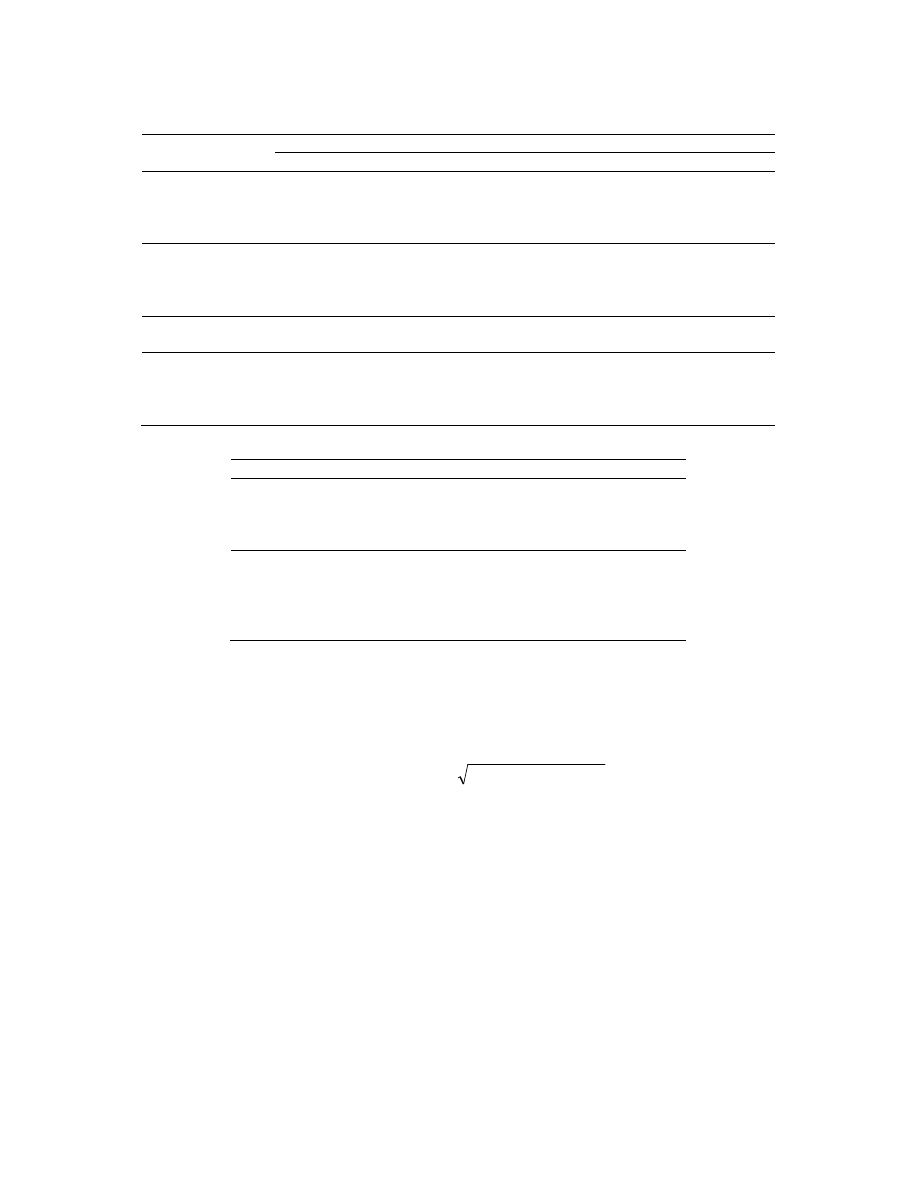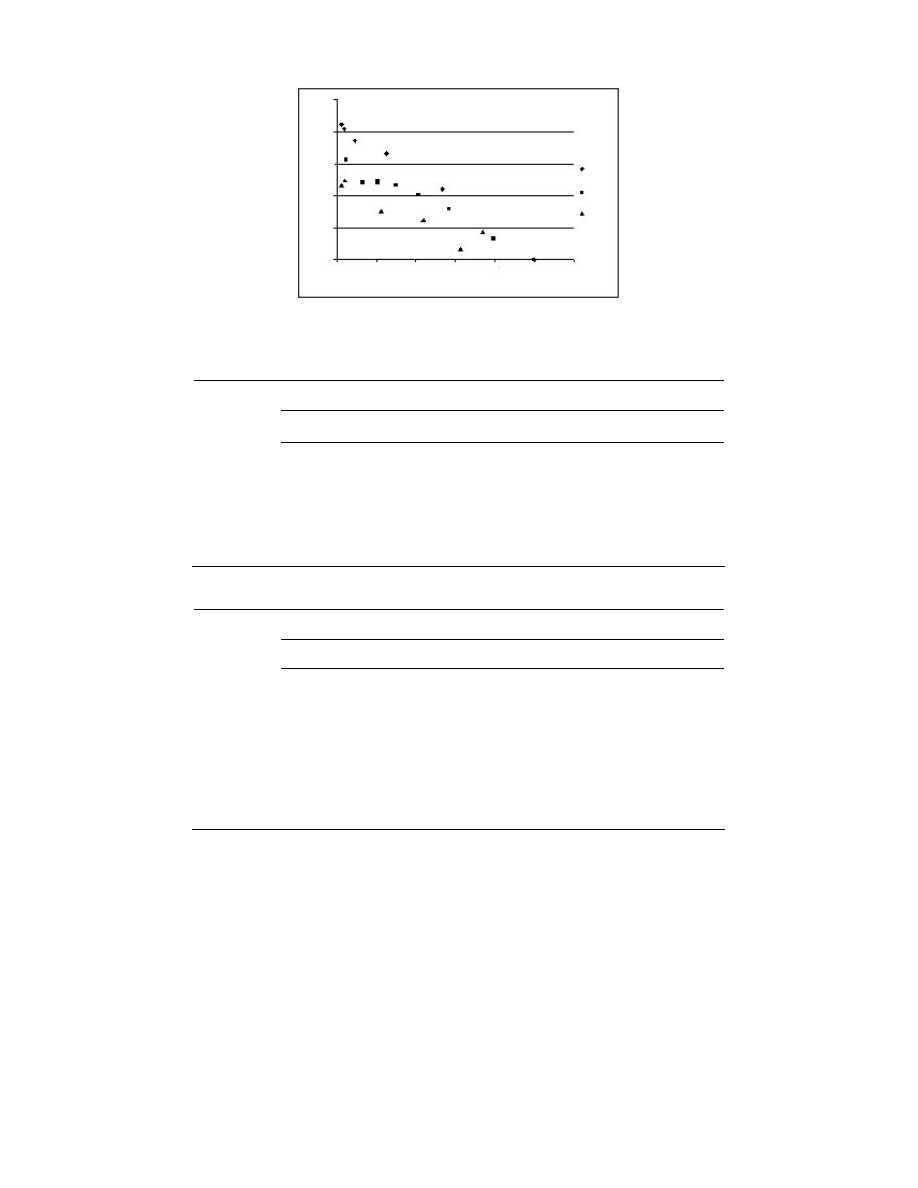
Drying 2004 – Proceedings of the 14th International Drying Symposium (IDS 2004)
São Paulo, Brazil, 22-25 August 2004, vol. C, pp. 2035-2042
2035
A COMPARATIVE STUDY ON HEAT PUMP, MICROWAVE AND FREEZE
DRYING OF FRESH FRUITS
M. S. Uddin
1
, M. N. A Hawlader
2
and Xiang Hui
1
1. Department of Chemical and Biomolecular Engineering,
E-mail: cheshahb@nus.edu.sg (M. S. Uddin)
2. Department of Mechanical Engineering
National University of Singapore
10 Kent Ridge Crescent
Singapore 119260
Keywords: heat pump drying, microwave drying, freeze drying, guava, mango,
honeydew, shrinkage, color, moisture diffusivity
ABSTRACT
Drying of fresh tropical fruits, namely guava, mango and honeydew, were carried out
making use of heat pump, microwave and freeze dryer to compare the influence of
different modes of drying on the dried products in terms of quality, appearance and
color. Moisture diffusion coefficient, shrinkage of volume and thickness and color
change were used for comparison. Fick’s second law of diffusion is used to calculate the
moisture diffusion coefficient. It is found that freeze-drying has the least shrinkage,
while heat pump drying promotes a moderate shrinkage, and microwave drying leads to
severe shrinkage of the dried fruits. It is found that the color change follows zero order
kinetics except at low moisture contents. Freeze-drying has the least effect on the total
color change of the fruits. Heat pump appears to provide better control of drying
conditions, which enables drying to be performed at low temperature and low relative
humidity, leading to better retention of appearance.
INTRODUCTION
The fresh fruits need to be processed to prolong their shelf life. Drying is one of the traditional
methods for preservation of fruits. The main purpose of drying is to reduce the moisture content to such a
level where spoilage due to the various reactions is minimized. Among the various drying methods, heat
pump, microwave and freeze drying are the most commonly used methods for drying of food materials.
Heat pump dryer is a high-energy efficiency convective type dryer. It enables drying under low

2036
temperature conditions. In a heat pump dryer, the air velocity, temperature, relative humidity can be
controlled independently. Microwave drying uses the irradiated energy. Its drying efficiency is much
higher than the convective drying and freeze-drying. Freeze drying has the advantage of obtaining the best
quality for dried product. But it has the lowest energy efficiency. Mango, guava, honeydew were selected
for the measurements of shrinkage and colour change during drying under different conditions and
methods. Color change experiments were also conducted using three other fruits (apple, pear, papaya)
samples.
EXPERIMENT
The heat pump drying system consisted of an air blower, electrical heating section, drying chamber,
evaporator section, and condenser section. It was fitted with anemometer, humidity sensor,
thermocouples for wet and dry bulb temperatures measurements. Air temperature, humidity and velocity
could be controlled independently in the heat pump drying system.
Microwave dryer: A household microwave oven (SHARP MICROWAVE OVEN, Model R-398B,
1000W, 2450MHz, internal volume 0.037m
3
) with time and power level control was used for microwave
heating. The airflow rate through the oven was 0.166m
3
/s.
Freeze dryer: Freeze drying system consisted of the freezer (MODULYO, EDWARDS), vacuum
system (High Vacuum Pump, EDWARDS) and a drying chamber, which was connected to the vacuum
system. The vacuum system can decrease the system pressure to 0.06mbar.
The fresh fruits used in this study were acquired from the local market and stored in the refrigerator at
4
o
C. The fruits were taken out of refrigerator an hour before the experiment and were peeled and sliced to
the square shapes (15mm
×15mm) with certain thickness.
ANALYSIS
Following procedures are used to analyze the drying results.
Shrinkage
During drying, sample undergoes shrinkage. Shrinkage has a close relationship to moisture content for
biological materials. One common expression has been employed by many researchers (Konstance and
Panzer, 1985; Kechaou et al., 1987; Vagenas and Marinos-Kouris, 1991; Simal et al., 1994; Bowser and
Wilhelm, 1996; Querioz and Nebra, 1996) as:
b
0
0
V
C
S
p
q
V
C
=
=
+
(1)
For sample thickness, Uddin et al. (1990) used an exponential function to relate shrinkage to moisture
content. Exponent is assumed to be constant for any specific material:
0
0
L
C
(
)
L
C
η
=
(2)
Drying kinetics
Fick’s 2
nd
Law of diffusion is used for vapor diffusion within the material during the falling rate period
of the drying. Considering slab geometry of thickness L drying from both sides and in absence of any
external resistances (Rao and Rizvi, 1986):

2037
2
2
e
e
2
2
2
0
e
n 1
C C
D t
8
1
exp[ (2n 1)
]
C
C
(2n 1)
L
∞
=
−
π
=
−
−
−
π
−
(3)
Moisture transport in a sample during drying is a complicated process, which combines many
mechanisms. Generally, an effective diffusivity (D
e
) is used to describe the moisture transport. In equation
2, it is assumed that the sample temperature and thickness are constant during drying.
In order to take into account the volume shrinkage, the moisture content in the above equation can be
written in the form of Y=C/V, then the equation becomes,
2
2
e
e
2
2
2
0
e
n 1
Y Y
D t
8
1
Y*
exp[ (2n 1)
]
Y
Y
(2n 1)
L
∞
=
−
π
=
=
−
−
−
π
−
(4)
Since the equilibrium moisture content for the conditions of drying in the present study is considered
negligible (Uddin et al., 1990), also for conditions where L is small and t is large, the terms in the
summation series in the above corresponding to n>1 are small. Under these conditions the following
approximation can be made:
2
e
2
2
0
D t
Y
8
ln
ln(
)
Y
L
π
=
−
π
(5)
Sample shrinkage is incorporated in the equation 4. Thus, the volume and thickness changes are taken
into account in the above equation by combining equations 2 and 6:
2
0
e
2
2
2
0
0
0
C
C
D t
8
ln
ln(
)
C
C
p
q
L (
)
C
C
η
π
=
−
π
+
(6)
Plotting ln(Y/Y
0
) versus t/L
2
(i.e.
0
0
C
C
ln
C
p
q
C
+
versus
2
2
0
0
t
C
L (
)
C
η
), the diffusion coefficient for the falling
rate period, the effective diffusivity (D
e
), can be obtained.
Color change
Color change is resulted from the non-enzymatic browning and destruction of natural fruit pigments.
Non-enzymatic browning is usually assumed to follow zero-order kinetics (Toribio and Lozano, 1986;
Singh et al., 1983) while destruction of natural fruit pigments follows the first-order reaction kinetics
(Abers and Wrolstad, 1979; Skrede, 1985).
Zero-order reaction:
0
C
kt
C
= −
(7)
First-order reaction:
0
C
exp( kt)
C
=
−
(8)
Either the zero-order or the first-order kinetic model may be used to analyze the color results of the
present study.

2038
RESULTS AND DISCUSSION
Drying of three tropical fruits (guava, honeydew and mango) were studied in the heat pump,
microwave and freeze dryers under different experimental conditions [temperature: (30 -50)
o
C; relative
humidity: (21 – 43)%; air velocity: (1.2 – 3.3) m/s; sample thickness: (2 -10) mm]. The experimental data
on sample weight loss, sample dimensions (thickness and volume) and color index as function of drying
time are analyzed to determine drying rate, volume and thickness shrinkage, moisture diffusivity and rate
constants for color change. To overcome experimental uncertainties, large number of experiments was
conducted and high R
2
values (greater than 0.92 in most of the cases) were obtained in data analysis. The
details of the experimental results could be found in the thesis of Xiang Hui (2001).
Drying Rate
The calculated drying rates for guava under typical conditions in heat pump, microwave and freeze
drying are shown in Figures 1-3. Individual experimental conditions are written as T, Rh and L for
temperature, relative humidity and sample thickness respectively.
0
0.04
0.4
0.08
0.8
0.12
1.2
dr
yi
ng
ra
te
(g
/g
so
lid
-m
in
)
30
0
C
40
0
C
45
0
C
50
0
C
X/X
0
0
0.2
0.1
0.3
0.4
0
0.4
0.8
1.2
10%
50%
70%
100%
30%
dr
yi
ng
ra
te
(g
/g
so
lid
-m
in
)
X/X
0
Figure 1- Drying rate of guava as a function of moisture Figure 2- Drying rate of guava as a function of moisture
content for different air velocity in heat pump for different power level in microwave drying
drying (T45Rh21L5)
dr
yi
ng
ra
te
(g
/g
so
lid
-m
in
)
X/X
0
(db)
2mm
5mm
7mm
10mm
0.01
0.02
0.03
0
0
0.4
0.8
1.2
y = -2.2627 x + 0.0191
R
2
=0.9989
0.04
0.08
0.12
0
0
-0.1
-0.2
ln
(Y
/Y
0
)
t/L
2
Figure 3- Drying rate of guava as a function of moisture Figure 4 – Plot of ln(Y/Y
0
) versus (t/L
2
) for guava
content for different sample thickness in freeze drying (T45Rh21U3L5)
The drying rate results show that guava and mango do not show any constant drying rate period,
whereas, honeydew results show a short constant drying rate period under some drying conditions of low
air velocity (below 1.2 m/s). It may be attributed to the higher moisture content of honeydew (about 9 g/g
solid) compared to guava and mango (about 5 g/g solid). The effect of air velocity on drying rate for three
fruits, guava, mango and honeydew, are studied. In general, there is increase in drying rate with the

2039
increase of air velocity. However, the effect is more significant in the lower range of air velocity, below
3.0m/s, and higher moisture content of the sample. Zhou (2000) has also obtained the similar results when
drying kiwi fruits in heat pump drying.
Shrinkage
Sample shrinkage, both bulk volume and thickness, is measured at different moisture content levels
and under different experimental conditions, such as air temperature, velocity, relative humidity and
sample thickness. Results show that bulk volume shrinkage data are more accurate and consistent than the
value of thickness shrinkage. This is mainly due to measurement accuracy. As the material dries, the
sample shape deforms. At low moisture content, sample surface becomes uneven and this results in low
accuracy in thickness measurements. For the analysis of thickness shrinkage, data below 15% moisture
content (dimensionless) are not considered. Results show that experimental conditions (air temperature,
velocity, humidity and sample thickness) do not have significant effect on bulk shrinkage. Hence, for
simplicity, the effects of experimental conditions on shrinkage have not been considered in relating
shrinkage to the moisture content. The bulk volume shrinkage and thickness shrinkage data for samples
studied under different conditions are correlated in the form of equations 1 and 2 respectively. Similar
equations have been used by some researcher (Querioz and Nebra, 1996 and Uddin et al., 1990) for apple,
banana and pineapple. The constants in equations 1 and 2 for each fruits are listed in Tables1-3.
Table1: The constants p, q, and R
2
in heat pump drying.
Fruit
p
q
R
2
R
2
Guava
0.9103
0.067
0.9902 0.3124
0.9206
Mango
0.8245
0.1468
0.9677 0.3697
0.9319
Honeydew
0.9173
0.0567
0.9904 0.4693
0.9688
Table 2: The constants p, q, and R
2
in microwave drying.
Fruit
p
q
R
2
R
2
Guava
0.9286 0.0431 0.9749 0.3298 0.9644
Mango
0.9034 0.0657 0.9776 0.4084 0.9410
Honeydew 0.9522 0.0371 0.9951 0.5159 0.9788
Table 3: The constants p, q
η and R
2
in freeze drying
Fruit
p
q
R
2
R
2
Guava
0.8163 0.1743 0.9406 0.3070 0.7508
Mango
0.8170 0.1497 0.9575 0.3471 0.9179
Honeydew 0.8366 0.1803 0.9771 0.3942 0.9449
Effective Diffusivity coefficient
Equation 6 is used to calculate diffusion coefficient. The equation takes into account shrinkage of
sample bulk volume and thickness. Diffusivity is calculated from the slope of the plot. Good linear fit is
obtained confirming that drying took place under falling rate period. During microwave drying under
certain drying conditions a second falling rate period appeared. This particularly happened for sample
thickness greater than 7mm. For such case a second diffusivity is calculated. Typical data fit for guava is
shown in Figure 4. All the diffusivity values for heat pump and microwave drying are listed in Tables 4
and 5.

2040
Table 4: Diffusivity values of water as function of drying conditions for HP drying.
Experimental
Guava
Mango
Honeydew
conditions
Slope
D
e
(m
2
/s)
Slope
D
e
(m
2
/s)
Slope
D
e
(m
2
/s)
T45Rh21U3L2
1.1699
1.98E-11
1.2486
2.11E-11
0.5637
9.52E-12
T45Rh21U3L5
2.2627
3.82E-11
3.3227
5.61E-11
1.4640
2.47E-11
T45Rh21U3L7
3.1290
5.28E-11
5.2498
8.87E-11
2.0867
3.52E-11
T45Rh21U3L10
4.3008
7.26E-11
7.0512
1.19E-10
3.9104
6.60E-11
T45Rh21U1.2L5
1.6440
2.78E-11
2.8266
4.77E-11
0.8917
1.51E-11
T45Rh21U1.91L5
2.1165
3.57E-11
3.0870
5.21E-11
1.2584
2.13E-11
T45Rh21U3L5
2.2627
3.82E-11
3.3227
5.61E-11
1.4640
2.47E-11
T45Rh21U3.34L5
2.7500
4.64E-11
3.4629
5.85E-11
1.6990
2.87E-11
T45Rh21U3L5
2.2627
3.82E-11
3.3227
5.61E-11
1.4640
2.47E-11
T45Rh33U3L5
2.1243
3.59E-11
2.7280
4.61E-11
1.2008
2.03E-11
T30Rh41U3L5
1.0416
1.76E-11
1.4807
2.50E-11
0.7362
1.24E-11
T40Rh43U3L5
1.7224
2.91E-11
2.7815
4.70E-11
1.0115
1.71E-11
T45Rh33U3L5
2.1243
3.59E-11
2.7280
4.61E-11
1.2008
2.03E-11
T50Rh30U3L5
2.2456
3.79E-11
3.8157
6.44E-11
1.1952
2.02E-11
Table 5: Diffusivity values of guava as a function of drying conditions for MW drying.
Expt. conditions
Slope1
Slope2
D
e1
(m
2
/s)
D
e2
(m
2
/s)
L2D15P100
1.1633
1.96E-11
L5D15P100
3.5070
5.92E-11
L7D15P100
6.6693
1.13E-10
L10D15P100
31.459
12.6970
5.31E-10
2.14E-10
L5D15P10
1.1120
1.88E-11
L5D15P30
1.5443
2.61E-11
L5D15P50
2.3887
4.03E-11
TL5D15P70
2.4262
4.10E-11
L5D15P100
3.5070
5.92E-11
Colour Change
Colour change of fruits is studied by drying six different fruits (apple, pear, papaya, mango, honeydew
and guava) in the heat pump drier and microwave drier under different conditions. Total color changes for
mango under different drying methods are shown in Figure 5. Weight and colour index (L*, a*, b*, and
E*ab) of samples were measured by withdrawing the samples from the dryer periodically. The results
are analyzed E*ab is calculated as
2
2
2
*
*
*
*
L
b
a
ab
E
∆
+
∆
+
∆
=
∆
. In the freeze-drying, the
measurement of colour index during the drying process is not possible as the ice on the sample surface
will melt, giving a false reading in the colour index. Thus, only the colors of fresh and dried sample were
measured. The rate constant of colour change of different fruits in heat pump drying and microwave
drying are listed in Tables 6 and 7.
Microwave drying provides high drying rate at the initial stage of drying due to high moisture content of
fruits and also at the final stage of drying when water transport is mainly controlled by vapor diffusion.
On the other hand, heat pump drying produces better quality (appearance, nutrients retention) products.
An integration of microwave and heat pump drying (microwave-heat pump-microwave) can optimize
product quality and drying cost.

2041
X/X
0
0
0.4
0.8
1.2
0
5
10
15
25
20
D
E*
ab
HP
MW
Fre
Figure 5 – Comparison of total color change for mango among different drying methods.
Table 6: Rate constant of colour change of fruits in heat pump drying
a*
b*
E*ab
Fruit
k (min
-1
)
R
2
k (min
-1
)
R
2
k (min
-1
)
R
2
Guava
-0.0066
0.9977
0.0516
0.9944
0.1133
0.9076
Mango
0.0115
0.9999
0.1482
0.9839
0.1732
0.9356
Apple
0.0208
0.9886
0.0826
0.9845
0.1933
0.9917
Pear
0.0214
0.9534
0.076
0.9728
0.0733
0.9691
Papaya
0.0570
0.9933
0.0634
0.9771
0.0892
0.9862
Honeydew
-0.0153
0.9833
0.1106
0.9968
0.2106
0.9872
Table 7: Rate constant of colour change of fruits in microwave drying
a*
b*
E*ab
Fruit
k (min
-1
)
R
2
k (min
-1
)
R
2
k (min
-1
)
R
2
Guava
-0.0388
0.8009
-0.1082
0.9513
0.2246
0.9165
Mango
-0.0140
0.6368
0.2682
0.9833
0.4305
0.9519
Apple
0.1558
0.9774
0.3509
0.9990
0.3759
0.9981
Pear
0.0468
0.9675
0.1227
0.9799
0.1271
0.8517
Papaya
0.1863
0.9716
0.1803
0.9852
0.2493
0.9776
Honeydew
-0.0087
0.9846
0.1700
0.9484
0.1136
0.9586
CONCLUSIONS
In the present work, drying kinetics, shrinkage and colour change of different fruits are studied and the
following conclusions are drawn:
It appears from the above results that freeze-drying leads to a minimum shrinkage, better colour retention,
but long drying time, resulting in higher cost. While microwave drying may be suitable in the early stage
of drying, when the moisture content is higher, or towards the end of drying, when the moisture transport
to the surface is purely diffusion control. It is likely to perform better in combination with another drying
method, for example, microwave-heat pump drying. Heat pump appears to provide better control of
drying conditions. It enables drying to be performed at low temperature and low relative humidity, leading

2042
to a better retention of appearance. A combination of microwave and heat pump may provide the desire
condition of drying to achieve fast drying rate, lower shrinkage, better appearance of the product and least
cost.
NOTATION
∆E
*
ab Total color change
-
b
*
Yellowness
-
C
Moisture content
kgH
2
O/kg dry solid
C
Color component
-
D
e
Effective diffusivity m
2
/s
k
Rate constant
min
-1
L
Sample thickness
m
L
*
Lightness
-
p, q
Equation constants -
Rh
Relative humidity
%
S
b
Bulk shrinkage ratio -
T
Temperature
o
C, K
T
Drying time
s, min
X
Moisture content
kg H
2
O/kg dry solid
V
Sample volume
m
3
Y
Moisture content
kg H
2
O/m
3
LITERATURE
Konstance, R.P. and C.C. Panzer. Air drying Slices to Reduce aw: An Anti-Clostridial Alternative to Sodium
Nitrite. Journal of Food Science. Vol. 50, pp. 862-868. 1985.
Keachaou, N., M.A. Roques and J.F. Lambert. Diffusion in Shrinkage Media: The Case of Drying of Gels. In
Physical Properties of Foods, ed by R. Jowitt, F. Escher, M. Kent, B. McKenna, and M. Roques, pp. 55-60.
London and New York: Elsevier Applied Science. 1987.
Vagenas, G.K. and D. Marinos-Kouris. Drying Kinetics of Apricots. Drying Technology Vol. 9, no. 3, pp.
735-752. 1991.
Simal, S., C. Rossello, A. Berna and A. Mulet. Heat and Mass Transfer Model for Potato Drying. Chemical
Engineering Science. Vol. 49, no. 22, pp. 3739-3744. 1994.
Bowser, T.J. and L.R. Wilhelm. Modeling Simultaneous Shrinkage and Heat and Mass Transfer of a Thin,
Nonporous Film during Drying. Journal of Food Science. Vol. 60, no. 4, pp. 753-757. 1996.
Queiroz, M.R. and S.A. Nebra. Theoretical and Experimental Analysis of the Drying Kinetics of Bananas. In
Drying ’96-Proceedings of the 10th International Drying Symposium, 30 July-2 August 1996, Krakow,
Poland, pp. 1045-1052.
Rao, M. A. and S. S. H. Rizvi. Engineering Properties of Food. Marcel Dekker, New York, 1986.
Uddin, M.S., M.N.A. Hawlader and M.S. Rahman. Evaluation of Drying Characteristics of Pineapple in the
Production Powder. Journal of Food Processing and Preservation. Vol. 14, pp. 375-391. 1990.
Toribio, J.L. and J.E. Lozano. Heat Induced Browning of Clarified Apple Juice at High Temperatures. Journal
of Food Science. Vol. 51, pp. 172-175. 1986.
Singh, R.K., D.B. Lund and F.H. Buelow. Storage Stability of Intermediate Moisture Apples: Kinetics of
Quality Change. Journal of Food Science. Vol. 48, pp. 939-944. 1983.
Abers, J.E. and R.E. Wrolstad. Causative Factors of Colour Deterioration in Strawberry Preserves during
Processing and Storage. Journal of Food Science. 4, pp.75-78. 1979.
Skrede, G. Colour Quality of Blackcurrant Syrups during Storage Evaluated by Hunter L’, a’, b’ values.
Journal of Food Science. Vol. 50, pp. 514-525. 1985.
Zhou, Liwen. Moisture Transfer and Nutrient Retention in Processing and Storage of Fresh Fruit, MEng
Thesis, National University of Singapore. 2000.
Queiroz, M.R. and S.A. Nebra. Theoretical and Experimental Analysis of the Drying Kinetics of Bananas. In
Drying ’96-Proceedings of the 10th International Drying Symposium, 30 July-2 August 1996, Krakow,
Poland, pp. 1045-1052.
Xiang Hui. Heat Pump, Microwave and Freeze Drying of Fruits, MEng Thesis, National University of
Singapore. 2001.
`
Wyszukiwarka
Podobne podstrony:
A comparative study on conventional and orbital drilling of woven carbon
Comparative study on synteny between yeast ane vertebrates
Improving nutritional value of dried blueberries combining microwave vacuum, hot air drying and free
Experimental Study On Stirling Engine Generator And Solar Receiver System For Future Space Applicati
Preparation of garlic powder with high allicin content by using combined microwave–vacuum and vacuum
12 on the Augustan Age and the Age of Sensibility
a dissertation on the constructive (therapeutic and religious) use of psychedelics
On Computer Viral Infection and the Effect of Immunization
David Icke The Illuminati Rituals On The False Millenium And Coming Age Of Light
Paul Rogers Global Security and the War on Terror, Elite Power and the Illusion of Control (2007)
012 Microwave and Dielectric Drying
Modeling and minimizing process time of combined convective and vacuum drying of mushrooms and parsl
[Folia Horticulturae] Phenolic compounds bioactive content and antioxidant capacity of the fruits of
Exergetic efficiency of high temperature lift chemical heat pump (CHP) based on CaO CO2 and CaO H2O
Numerical study on sublimation condensation phenomena during microwave freeze drying
Numerical study on sublimation condensation phenomena during microwave freeze drying
DESIGN, SIMULATION, AND TEST RESULTS OF A HEAT ASSISTED THREE CYLINDER STIRLING HEAT PUMP (C 3)(1)
Effect of heat treatment on microstructure and mechanical properties of cold rolled C Mn Si TRIP
więcej podobnych podstron